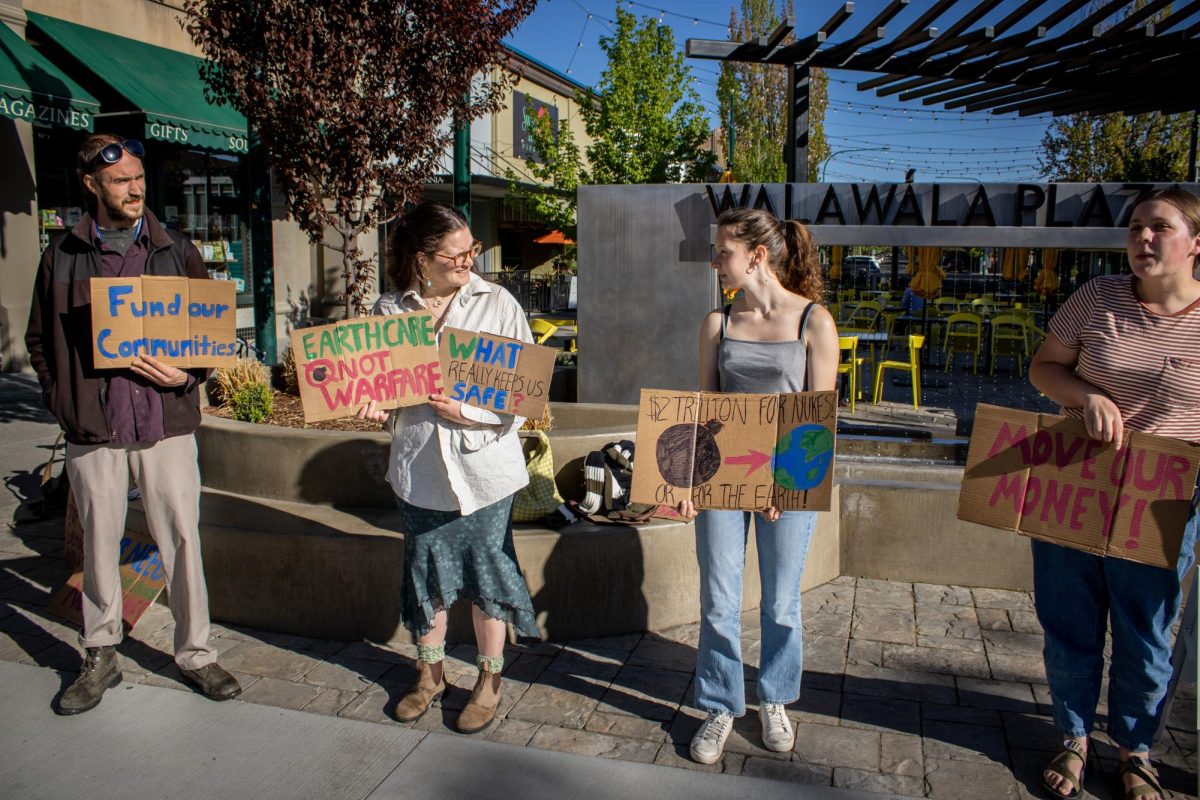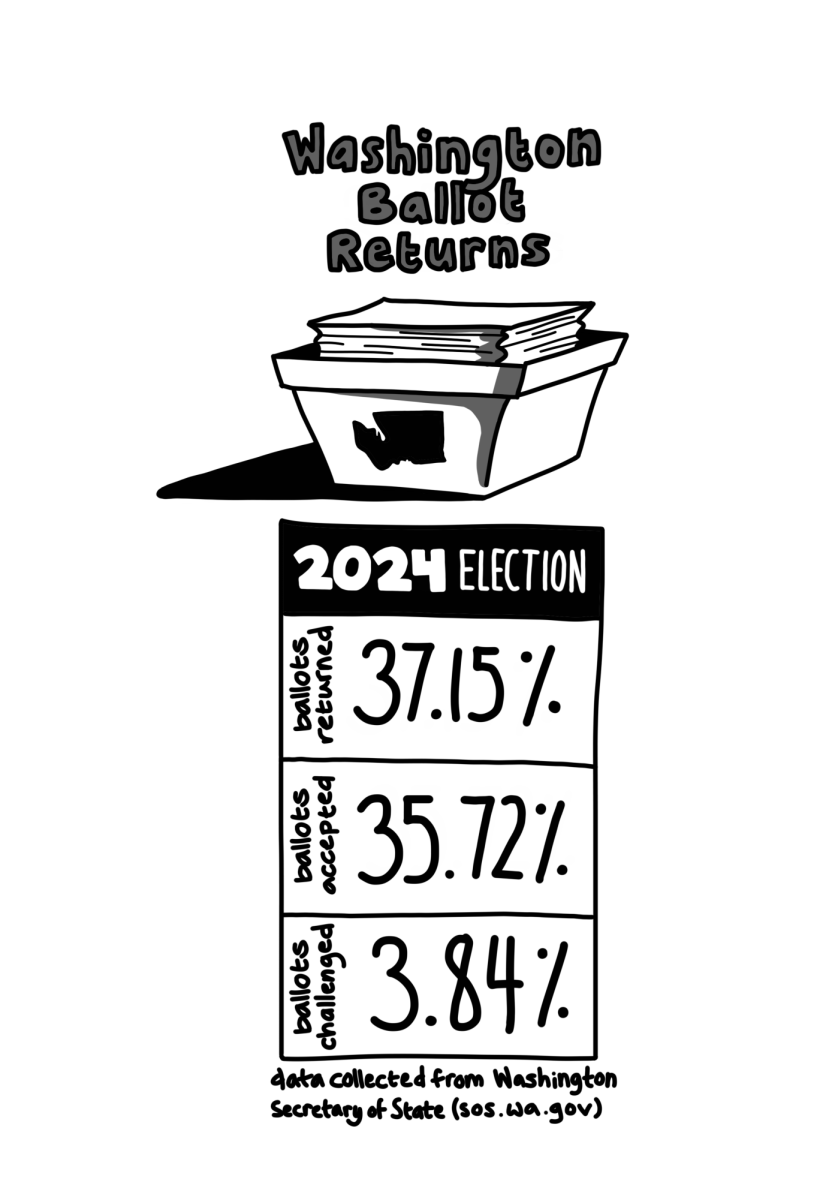This past Monday, Dec. 1, the Whitman Civil Liberties Union (WCLU) held an educational workshop on the death penalty. Entitled, “The Death Penalty A Constitutional Question,” the workshop featured three members of WCLU, junior Kelli Kuhlman, sophomore Mimi Psyno and first-year Ian Williams and their faculty advisor Professor of Politics and President of Washington State’s ACLU Timothy Kaufman-Osborn.
Originally, the Washington State Penitentiary was scheduled to execute Darold Stenson for the aggravated murder of his wife and business associate on Dec. 3, but the execution has been stayed pending various legal appeals.
“The two stays that were issued by courts, one involved a request for additional time in order to do some DNA testing, the other stay was granted by the court in order to conduct an inquiry into lethal injection…The Washington State Supreme Court refused to lift the stay that had been applied on the basis of a request for DNA stay. The Department of Corrections indicated it will not set a new execution date for at least 3 months,” said Osborn.
In the rest workshop, Professor Osborn and the WCLU members discussed the history of the death penalty in the U.S., in Washington State in particular, and constitutional problems with the death penalty.
Constitutional objections to the death penalty have taken two forms: objections over the method of execution and objections over the fairness of applying the death penalty. In most states, the default method for execution is lethal injection.
Professor Osborn began his remarks by recounting of his attendance at a riotous death penalty protest at the state penitentiary in Walla Walla in 1993 when hanging was the method of execution. There were two groups of people, some in favor and a much larger group in opposition to the death penalty. Since then, Washington’s adopted lethal injection in order to incite less divisive protests and gatherings.
Lethal injection, as a method of execution, has certain pharmacological problems. In most states, standard procedure calls for the injection of sodium thiopental (an anesthetic), pancuronium bromide (a chemical that paralyzes the body’s muscles) and potassium chloride( a chemical that induces a heart attack).
“Because of its role in securing the unconsciousness, guaranteeing a painless death, you’ve got to get that first chemical right,” emphasized Osborn.
Often, the medical staff that oversees the chemical injection may have little or no experience with such a procedure. There is a substantial risk that the victim will wake up in the middle of the execution, be unable to move any muscles and express the intense pain, but nonetheless must experience a heart attack.
“Should that occur, because pancuronium is a paralytic, the condemned will be unable to give voice to the intense burning sensation by the muscle cramping and the heart attack. The paralytic is employed to ensure that you’ve got a mute body that’s unable to give any expression to the pain that’s endured. In California, where about 26 executions have been conducted in the last 20 years, there’s good reason to believe that about half of them have gone awry in one way or another,” reiterated Osborn.
Osborn and other organizations such as the ACLU and Washington’s Coalition to Abolish the Death Penalty view such a procedure as risk laden and a violation of the 6th amendment’s clause prohibiting cruel and unusual punishment.
“As a punishment, death is qualitatively different than all other punishments. It’s different in its severity and irrevocability. As such, it should be reserved to the most heinous of the most heinous. If we find out that the worst of the worst are not executed then we’ve got a problem,” said Osborn.
In terms of the death penalty being applied fairly and without bias toward factors such as race and socioeconomic status, Osborn cited several Supreme Court cases, such as Georgia v. Furman, McCleskey v. Kemp and academic studies, including his own, that show how cases involving racial minorities, as victim or perpetrator, make one more likely to be subject to the death penalty.
One study, cited in McCleskey v. Kemp, examined homicide cases in Georgia and showed that controlling for various nonracial variables, the odds of being executed were over 4 times greater for defendants who killed whites than for defendants who killed blacks. Similarly, the odds of being executed were higher for black defendants than white ones. Professor Osborn’s own study indicated that in the 251 first-degree aggravated murder cases in Washington State from 1981 to 2003, the death penalty was imposed in 15 percent of cases with white victims but only 8 percent in cases with non-white victims. Thus, murdering a white person makes it 1.9 times more likely to receive the death penalty.
The workshop then featured a Q&A session where Osborn and other WCLU students took questions from the audience, some of whom came all the way from Richland to hear the talk.
“Hopefully the success of the talk last night will keep the WCLU in people’s minds and get them coming to more of our events,” WCLU President Kelli Kuhlman said. “We want to continue to follow the case of Darold Stenson as well as continue to discuss the struggle of the death penalty in light of the constitution.”











